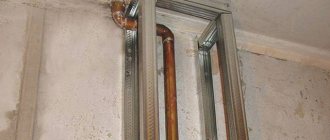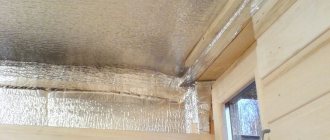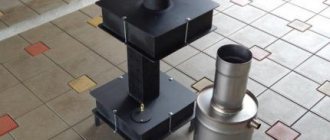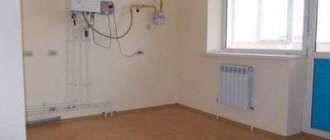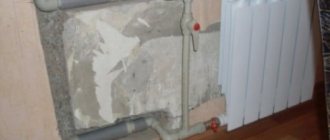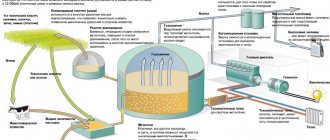Hang blackout curtains: open them in the morning and close them at dusk
With the onset of winter, thin curtains on the windows should be replaced with thick curtains and closed as soon as it starts to get dark outside. Thick curtains will act as a thermal insulator and protect the house from cold air currents. This is especially true if the windows are ventilated (unfortunately, not only old wooden windows, but also some modern plastic ones are guilty of this).
During the day, the curtains need to be opened, and the wider the better. Sunlight and warmth will enter the room through the window. It is clear that the temperature will increase by a maximum of 1–2 degrees, but it will still be much more comfortable to be indoors at lunchtime.
Stylish thick curtains in dark gray or chocolate color from the Mebelion home goods store will help keep your apartment warm and create coziness.
Curtain Primavelle in Mebelion From RUB 2,800. +7
Curtain Mona Lisa in Mebelion From 3,250 rub. +7
How to make a cold room warm: 14 simple tips
True, you need to think about this even before starting repairs. The main advantage: having spent once, you will never worry about heating again and will be able to save significantly on it, especially when it comes to autonomous heating or a private home.
2. Install heated floors
Calculate the exact cost of repairs using an online calculator
and receive a free detailed estimate for repairs
Calculate
If you don’t like thermal insulation or can’t afford it, heated floors are a great solution. Today it is chosen by many families, especially those with children. The big plus is that the warm floor heats the lower part of the room, where it is usually coldest. This flooring can be installed in separate rooms if you do not need it throughout the entire apartment.
3. Insulate the balcony
For some reason, many people forget that a balcony is not a barrier to cold, but rather a source of it, because the glazing area of a balcony opening is much larger than that of a regular window. The simplest option is to cover the walls and floor with wooden panels, choose frames with double glass and hinged doors. Those that open like a wardrobe allow the cold to pass through.
4. Eliminate drafts
You can detect drafts with a candle or a damp hand. But you can deal with them in different ways: using sealant, rubber seals or simple carpentry tape, if you are not in the mood for repair work right now.
5. Replace the front door
If you moved into an apartment from a developer, your front door is probably the simplest and allows air to pass through. Sometimes in apartments you can even hear the howling of the wind at the entrance, how warm it is there! A high-quality and correctly installed entrance door will make your life much more pleasant, especially if you have a one-room apartment.
6. Insulate window glass
You can create a barrier on the inside of the windows to prevent heat from escaping. To do this, use a special heat-reflecting film. It can be done quite simply - stick on polyethylene with pimples using ordinary water.
7. Hang a ceiling fan
Warm air accumulates at the top, which means it needs to be sent down. Turn the fan on to the lowest setting so that the device disperses the air evenly.
8. Buy a heated blanket
It is more economical than heaters, and even though an electric blanket is not the most stylish solution, it will cope with its main task one hundred percent. Even when the room gets cold, you will still sleep warm.
9. Get warm textiles and carpets
This works especially well if you have a lot of cold surfaces in your home: wood, tile, marble, and so on. What's the point of a heater if you're walking on an icy floor or sitting on a cold chair? Buy carpets, rugs and pillows urgently. By the way, the fashion of hanging a rug on the wall is also coming back. Just choose modern and original prints.
10. Replace curtains with thicker ones
During the day, it is better to keep the windows open, so that sunlight penetrates through the glass, and with it the heat. But as soon as it starts to get dark outside, it’s better to immediately close the windows with thick curtains, you can even fasten them to each other. Dense warm material will act as a thermal insulator.
11. Place a sheet of foil behind the radiator
A more convenient material is foamed polyethylene with reflective foil. The foil reflects the heat that would normally escape through the wall, and the radiator will work more efficiently.
12. Use your heater wisely
If you try to cope with the cold in your apartment with just a heater, you won’t feel the effect, but it will leave a hole in your budget. It is better to purchase two compact heaters and turn them on in separate rooms with the doors closed.
13. Put a heating pad in bed
You can warm yourself and your bed at no cost at all. Place a heating pad or hot water bottle in the center of the bed 15 minutes before bed, or wrap it in a towel and place it at your feet. There is another way to warm the bed: fill the bottle not with water, but with dry, clean cherry pits. They say it's warm. It would be interesting to check!
14. Wear layers of clothing
Choose artificial fabrics that are less breathable: this way you can reduce the number of layers. In recent years, in many online clothing stores, collections of thermal underwear have appeared that can be worn either separately or under other clothes. You will be warm, comfortable, and you won't look like a cabbage.
Buy an electric blanket or sheet
Go to a cold bed? It's unpleasant to even think about. Sometimes you cover yourself with three blankets, but still can’t get warm and sleep. To fall asleep only in a warm bed, use an electric sheet or blanket. They are equipped with special heating elements and have several temperature settings. Turn on the sheets 15-20 minutes before going to bed and go about your business. When you return, the bed is already dry and warm.
Electric sheets are completely safe, because they are equipped with an automatic shut-off system, and you choose the time yourself (usually the sheet needs to be turned off after three to seven hours of operation).
The power of the sheet is 40–100 watts, but a lot depends on the model and size of the device. And, by the way, the electric sheet can be washed (the cable with which the sheet is heated is removable).
How can you heat a room or apartment without a heater: review and evaluation of methods
The heating season in apartments and houses with a centralized heating system is fixed and begins on a specific day.
However, the weather does not always allow you to bask in the warmth until the radiators are turned on; it often starts to get colder earlier and the temperature in the rooms begins to drop noticeably.
Heaters save the day, but it also happens that at a particular moment such a device may not be at home. Here you have to get creative and use more interesting methods of heating rooms.
It is possible to heat a room without a heater!
To raise the room temperature, you can use several simple methods:
"Kitchen" methods
If the apartment is cold, the easiest and most productive way is to start cooking, preferably both on the stove and in the oven. This way the room will heat up quite quickly, and the food will also be ready.
It is safe as long as a person is in the kitchen and controls all processes.
And to increase the efficiency of heat transfer, it is better to leave the oven to cool with the door open after cooking.
The option of leaving gas burners on is very dangerous, as there is a risk of forgetting about the stove, thereby causing an explosion or carbon monoxide poisoning.
The cooking process increases the room temperature
Boiling water. Putting a pot of water on the stove and letting it simmer may seem like a good idea from a heating standpoint. Indeed, constant boiling will warm the room, but you shouldn’t get too carried away with this method.
The large amount of steam that enters the air increases humidity and absorbs heat, so the room will quickly become cool again. In addition, it will feel even fresher there, since the humid air feels colder.
The boiling water option is good for boiling a kettle, but it is not very effective either.
Boiling water not only warms the room, but also moisturizes it
Bath
Hot water. A full hot bath will help warm the air in the bathroom and adjacent room - the water will simply raise the temperature.
This option is convenient to use before water procedures - first draw a bath, heat the room, and then go to the shower in an already warm room.
In other situations, this is not very effective and economical - the water will quickly cool down and you will have to fill it up again and again, which can become a big problem if you have a meter.
Running hot water in the bath is one way to heat a room
Electrical appliances to help
If the house has an air conditioner, you should definitely read the instructions for it, because most modern models have an air heating function. Here it is worth considering an important point - you can warm up using the air conditioner only until the temperature outside drops below +5. This is a simple and economical way to quickly warm up a room.
Immediately after turning on the heating on the air conditioner, warm air will not come out of it. You need to wait about 10 minutes for the system to rebuild.
Hair dryer. During operation, the hairdryer heats the air stream and blows it out - why not use it as a small heater.
Of course, heating the entire room in this way is problematic, but there is an excellent option to warm up - build a hut from blankets and turn on a hairdryer in it - a small space will heat up very quickly this way.
But you should be careful - during operation the device heats up, and metal elements in contact with synthetic fabrics create a fire hazard.
Hot air from a hairdryer can also heat up a confined space.
Vacuum cleaner. If the room is cool, then a good solution would be to start cleaning and vacuuming, after closing the doors to other rooms.
During operation, heated air comes out from the back of the vacuum cleaner - as a result, the temperature will actually rise. This is an exclusively local and temporary solution; it will not be possible to efficiently heat the entire apartment in this way.
In addition, you need to make sure that the filters are clean, otherwise, in addition to the heat, the room will be filled with an unpleasant smell of dust.
Hot air comes out of the vacuum cleaner during operation.
For all of the above methods to work most effectively, heat loss must be minimized. For example, put a carpet on the floor, seal the cracks in the windows, and close the ventilation holes. However, when cooking on a gas stove, it is better not to isolate the outflow and inflow of air - this will make the room dangerous.
You can really warm up at home without a heater using simple methods: turning on the oven, putting a kettle on the stove or using a hairdryer. Such methods give results, but they are short-lived, and not all of them are safe, so you should not lose your vigilance.
- Stanislav Lomakin
Source: https://tehznatok.com/kak-polzovatsya/kak-mozhno-obogret-komnatu-kvartiru-bez-obogrevatelya.html
Move
Movement is life. And warm. And to stay warm, you need to move! Physical activity increases your heart rate, improves blood circulation and stimulates an increase in body temperature. Do a little exercise: squat, pump your abs, bend from side to side. Finally, clean out your kitchen or bathroom.
This way you will not only warm up quickly, but also get a great figure and a clean apartment. Isn't this wonderful?
Optimal temperature in the apartment
When your home is very cold, it not only brings discomfort, but can also cause health problems. Regular hypothermia leads to frequent colds. Children and older people are especially prone to this. The optimal temperature in the apartment should not be lower than 21-23℃. You can control the air temperature with special devices, which are offered in a large assortment by the modern market of technical devices.
Standard household thermometer Source g03.a.alicdn.com
Leave the oven door open after baking
This may not be the safest method to heat your apartment, so if you have small children or curious pets, skip the oven idea. But if you are sure that no one will climb into the hot oven while your back is turned, then feel free to use this method of heating the kitchen and neighboring rooms.
Suppose the delicious cookies are ready, you have already turned off the oven. Then leave the oven door open and let the heat escape. And although the kitchen, where you constantly cook, is already the hottest place in the house, this way you can warm up here a little longer than usual.
REMEMBER: the oven must be turned off!
The heating in the house has been turned off or has not yet been turned on, how to warm up? 5 reliable ways
- Use curtains. During the day, you can open the curtains and lift the blinds to let sunlight into the room - window glass allows heat to pass through. This raises the room temperature by a couple of degrees.
Another option is to use additional curtains at dusk to prevent the loss of thermal energy. A large amount of heat escapes through windows, especially when the frames are wooden. Old blankets and bedspreads will help, which can be used as second curtains, hidden behind beautiful fabrics.
- A thick carpet on the floor will save you. It's hard to wake up in the morning in the cold. It’s scary to get out from under a cozy blanket at this time of year - you don’t want to put your bare feet on the icy floor.
Lay textiles with dense pile on top of laminate or linoleum in front of the bed; this will become reliable protection from the cold. This advice is especially relevant for residents of the lower floors; a warm floor covering reliably insulates from the cold floor.
- Place blankets in different parts of the house. There should be as many cozy blankets in the room as possible. You can put a warm blanket on each piece of upholstered furniture. If you feel like you're freezing, cover yourself. Once warmed up, put the shelter aside.
The original bright colors will turn the blanket into a spectacular interior element.
Know-how - a blanket with sleeves! It’s very convenient, you can calmly read a book, work on the computer, or drink a warm drink.
- Warming the bed. An electric blanket is a dangerous item, and it also wastes a lot of electrical energy. It is better to use an ordinary wool blanket, it is very warm. Place a blanket on top of the mattress to make it more comfortable in the winter.
How can you warm up a cold bed before going to bed? Use a hot hairdryer, this is an indispensable item for warming linens, clothes or shoes.
You just need to remember the safety rules. It is forbidden to cover the household appliance with anything; an overheated device may cause a fire!
- Do not close the oven after use. Are you interested in baking pies, cakes, and cookies? At the end of the procedure, leave the oven door open, the hot air will come out, and the apartment will immediately become warmer. Only at this moment there should be no children or pets in the kitchen; it is better to send them to another room in advance.
Scatter blankets around the apartment
The more warm blankets in your apartment, the better. They can lie on every sofa and every chair. When they started to freeze, they threw a blanket over their shoulders, to warm up, they put the blanket aside. Plus, cute blankets are stylish interior items.
By the way, blankets with sleeves are now popular: they are very comfortable to read a book, work at the computer or drink hot tea.
You can find a warm, beautiful and cozy blanket made of natural wool in the Perina Peroni bedding salon.
Plaid "Paters" in "Perina Peroni" From 5,870 rub. +7
Plaid "Paters" in "Perina Peroni" From RUB 3,650. +7
Stock up on heating pads
Of course, an electric sheet is the result of technological progress, but hot water in a rubber heating pad or a simple plastic bottle was, is and will be one of the simplest and most effective means for heating a bed or body. It’s not for nothing that servants put copper hot water bottles in their masters’ beds several centuries ago. And now the rules of the game have not changed: put a heating pad in your bed before going to bed - and enjoy the warmth.
It is worth noting that there are special heating pads on sale that can be placed in the microwave. Heat it for one minute and you are ready to use. In addition, there is a salt heating pad: it heats up due to the crystallization of salt. The temperature of such a heating pad reaches 52 degrees Celsius.
How to heat a room without a heater – VashSlesar.ru
a) heat is released by the radiator and spreads throughout the room;
b) heating of the room is carried out only due to the phenomenon of thermal conductivity;
c) heating of the room is carried out only by convection;
d) energy from the battery is transferred to cold air by thermal conductivity and distributed throughout the room by convection.
In multi-apartment residential buildings, maintaining the standard air temperature in the premises is ensured by a central heating system. The main type of heating devices in the central network are radiators made of various materials. This publication is devoted to answering the question - how a room is heated with a central heating radiator.
Based on the materials used, water heating radiators are divided into 4 main groups:
- Aluminum;
- Bimetallic;
- Cast iron;
- Steel (panel and tubular).
Each of the materials used to manufacture radiators has its own special thermophysical characteristics. For heating systems, the main indicators are thermal conductivity and strength.
The magnitude of thermal conductivity has a direct effect on the heat transfer of the device - the greater it is, the better the heat is transferred from hot water to the air of the heated room.
The strength of the product is necessary to ensure the battery operates under high pressure and coolant temperature.
Each battery material has its own requirements for the composition of the coolant. Devices made of steel and with steel frames (bimetallic) are susceptible to corrosion when there is a high oxygen content; aluminum is sensitive to the pH value. Only cast iron has low corrosion wear and is neutral to the chemical composition of water.
The principle of operation of the radiator is to use convective air movement. According to the laws of physics, warm air always rises due to its lower density (and therefore weight). A high-temperature coolant moves in the internal hollow space of the battery and heats the metal wall of the device. Metal transfers heat to the air in the room.
Cold air is concentrated in the lower part of the room, it enters the external structure of the radiator, heats up and rises. A new portion of cold air takes its place. This movement is realized on an ongoing basis (provided the radiator is heated with coolant).
To optimize air movement through the battery design, the surfaces of the products are equipped with fin plates. They increase the heat exchange area and correct the direction of air movement. In addition, to implement convective air movement, it is necessary that there be gaps between the radiator and the enclosing structures. Their standard value has the following meanings:
- Distance from the floor – from 60 to 100 mm;
- The distance from the wall to the rear plane of the device is at least 20 mm;
- The gap from the top edge of the battery to the window sill is at least 50 mm.
In addition to convective heat transfer, radiators transfer heat using radiant heat transfer (thermal radiation). The heat is transferred directly to surrounding objects.
The thermal output of radiators is adjusted using various types of fittings - ball valves, manual and thermostatic valves. In addition, the coolant enters the network at a certain temperature, which is changed by heat supply organizations depending on the ambient temperature.
Radiators are the main type of heating devices in central heating systems of multi-storey buildings. They are distinguished by their simplicity of design and operation, are highly durable and efficient. Another important factor is that batteries are always cheaper than the second most popular water heating devices - convectors.
Heaters as a method of warming a room
Today there is a considerable selection of heating devices, let's look at several types and compare them with each other according to the following parameters:
- principle of operation;
- advantages and disadvantages of use;
- price.
The most popular and effective heating devices will be considered, such as:
- convector
- fan heater or heat gun;
- oil heater.
- Convector.
This device appeared on store shelves relatively recently, but is quickly gaining momentum and winning its fans.
Convectors come in several types:
The basic principle of heat generation for any of them is the continuous circulation of air masses through the convector body, usually from bottom to top, since cold air is much heavier than warm air.
But still, there are differences between them, everything depends on the room in which they plan to use it, for how long and how often. Let's look at the advantages and disadvantages of each of them separately.
Advantages of a water convector:
- has a fairly low heating temperature, but at the same time maintains heating at a good level, heats up quickly and can significantly reduce energy costs;
- the weight of the convector is relatively small, which allows it to be mounted on walls and partitions made of plasterboard;
- the convector blocks the penetration of air from the street into the room; if it is fixed under the windows, something like a thermal curtain is formed.
- The distribution of air mass flows is uneven, drafts may form;
- constant circulation of dust in the room;
- a water convector does not allow the use of artificial ventilation in the room, since all the heated air initially goes up and, accordingly, it will simply go outside;
- They do not heat rooms with high ceilings well, since all the heated air accumulates at the top.
Advantages of an electric convector:
- silent operation of the device;
- ease of use and installation;
- Efficiency reaches 95%;
- heating speed;
- price.
- Efficiency drops noticeably over time;
- high energy consumption;
- cannot heat large rooms;
- dries the air.
Advantages of gas convectors:
- safety in use;
- made from environmentally friendly materials.
- To install this device, it is necessary to invite employees of gas companies.
Prices for convectors vary from 2000 rubles. up to 50,000 rub. The most economical in price are electric convectors, the most expensive are water ones.
In general, the choice of convectors in stores is very diverse; with the help of them you can heat either a room or an entire house. The choice always remains with the consumer.
- Fan heater or heat gun
This equipment is equipped with a heating element onto which air coming from a fan blows, thereby creating streams of warm air masses.
There are three types of fan heaters: heating elements, spiral and ceramic, but the principle of operation does not change.
The obvious advantages of these heaters are:
- room heating rate;
- the temperature can be adjusted using a thermostat;
- low cost.
- any of the listed fan heaters will dry the air;
- when various small particles get into the device, an unpleasant odor may emanate or harmful substances may be released;
- noisy;
- air currents will lift all the dust from the surfaces of the room;
- There may be sudden temperature changes between the ceiling and floor.
On average, the price of heat fans varies from 800 rubles. up to 20,000 rub.
Heat fans are suitable for short-term use. This is one of the economical ways to warm a room.
It is a sealed housing with a heater installed inside and filled with special liquid oil. When the oil heats up, the heater body heats up, and due to self-convection, the air in the room also begins to heat up.
Its undoubted advantages are:
- affordable price;
- long service life;
- economical energy consumption;
- does not dry out the air;
- safety as it has no exposed heating elements.
- slow heating of the room;
- massiveness.
The price of an oil heater varies from 1,500 to 12,000 rubles.
Overall very good price/quality ratio.
It’s cold in the apartment, looking for a solution to the problem
The natural reaction of a normal person to cold is to find a way to warm up.
Even if we live in apartment buildings and sometimes we do not have the technical capabilities to fully express our imagination in this matter, we have plenty of strength and means at our disposal. Don't panic.
The accumulated practical experience will tell you ways to solve the problem. In addition, today there is a fairly wide selection of technical means for heating residential premises.
Source: https://drova-pil.ru/batarei/kak-obogret-pomeshchenie-bez-otopleniya.html
Brew warming teas
What does “warming” mean? “Any hot tea warms you,” you say. Yes, you can’t argue with that, but still, winter teas must contain special ingredients: ginger, cinnamon, lemon, honey, cloves, pepper. Here, for example, is a recipe for ginger tea with apple and lime:
- 0.5 l of water;
- 3–4 cm of ginger root;
- a pinch of cinnamon;
- 1 tsp. green tea;
- 3 tsp. flower honey;
- carnation;
- 1/2 lemon;
- green apple and lime slices.
Cooking method:
- Peel and finely chop ginger root;
- pour water into a saucepan, add ginger, cinnamon, cloves;
- bring to a boil and cook for 10 minutes;
- put honey and lemon (squeeze the juice from the lemon and throw the rest into the saucepan);
- cook for another 5 minutes;
- Brew green tea in a teapot, strain the hot broth into it;
- Pour into mugs, adding green apple and lime slices. Ready!
Hug!
Stay warm with your loved ones and be happy. And then no cold is scary!
- Embrace!
Surely! And this, I want to assure you, is not only a unique remedy for all seasons, but also a panacea for all worries. Ksenia Nagaeva Blogger
If you feel irritated, go hug with your loved ones! Or, for example, you are on a diet, and someone prepared some baked goods, and then opened the oven to preserve heat. Ignore the kitchen and go to the bedroom or nursery for a dose of cuddles. Believe me, these are better than cookies! Winter is a time when you need to give and receive warmth!
